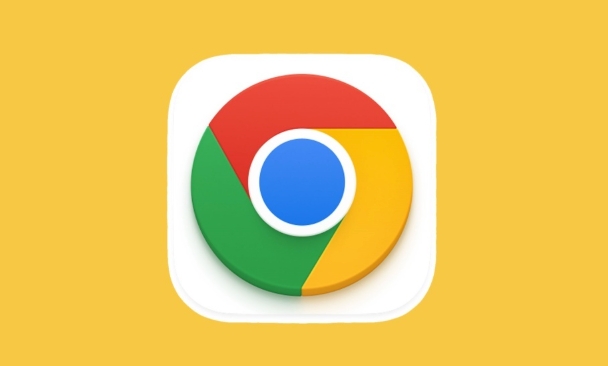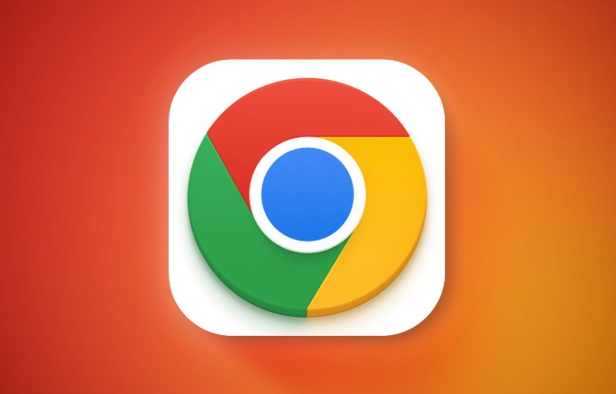When Chrome cannot play sound, first check whether the tab page is muted, then confirm that the system audio output device is correct, then update or reset Chrome settings, and finally troubleshoot problems with Flash or specific websites. 1. Check whether the tab page where the audio and video plays has a mute icon and unmute it; 2. Select the correct audio output device through the system volume settings and test other browsers or players; 3. Go to chrome://settings/help to check for updates or reset browser settings through chrome://settings/reset and disable extended troubleshooting interference; 4. Visit chrome://settings/content to enable Flash or allow the website to automatically play sounds, and try to test in traceless mode. If the above steps are invalid, it may be a system driver or operating system problem.

Chrome not playing sound can be frustrating, especially when you're trying to watch a video or listen to music. The issue isn't always about your speakers or headphones — sometimes it's Chrome itself. Here are some common reasons and fixes that actually work.

1. Check the Mute Button in Chrome Tabs
One of the most overlooked issues is the small mute button on individual tabs. Chrome lets you mute each tab separately, and it's easy to forget which one you've muted.
- Look at the tab with the video or audio playing
- If you see a crossed-out speaker icon, click it to unmute
- This setting resets every time you reload the page, so it might come back if the site auto-mutes by default
This doesn't just apply to YouTube — many sites respect the browser's mute state until interacted with.

2. Make Sure Chrome Is Set as Default Browser for Audio
Sometimes, Windows or macOS might route audio through a different app or device. That means even though Chrome is playing sound, you're not hearing it because the system output is set wrong.
Try these steps:

- Right-click the volume icon on your taskbar (Windows) or go to Sound Settings (Mac)
- Make sure the correct output device is selected
- Test another browser or media player to confirm your system audio works
Also, Chrome may get stuck using an invalid or disconnected audio device. Restarting Chrome or your computer often clears this up.
3. Update or Reset Chrome Settings
Outdated versions of Chrome can cause all kinds of glitches, including audio problems. Also, corrupted settings or extensions can interfere with how Chrome handles sound.
Here's what to try:
- Go to
chrome://settings/helpto check for updates - If updated already, try resetting Chrome:
- Go to
chrome://settings/reset - Click “Restore settings to their original defaults”
- Confirm and restart Chrome
- Go to
Before resetting, disable any extensions temporarily to see if one of them is causing the issue.
4. Flash Player or Site-Specific Issues
Some older websites still use Flash or other plugins that Chrome no longer supports by default. If you're trying to play sound from a legacy site, it might not work unless you manually enable those features.
What you can do:
- Go to
chrome://settings/content - Scroll down to "Flash" or "Sound"
- Allow sites to play sound automatically if blocked
You might also want to test the same page in Incognito Mode. If it works there, then an extension or cached data was likely the culprit.
If none of the above help, it might be a deeper system-level issue, like audio drivers or OS updates missing. But for most people, checking the tab mute, audio device, and resetting Chrome settings usually gets things working again.
The above is the detailed content of Why is Chrome not playing sound. For more information, please follow other related articles on the PHP Chinese website!

Hot AI Tools

Undress AI Tool
Undress images for free

Undresser.AI Undress
AI-powered app for creating realistic nude photos

AI Clothes Remover
Online AI tool for removing clothes from photos.

Clothoff.io
AI clothes remover

Video Face Swap
Swap faces in any video effortlessly with our completely free AI face swap tool!

Hot Article

Hot Tools

Notepad++7.3.1
Easy-to-use and free code editor

SublimeText3 Chinese version
Chinese version, very easy to use

Zend Studio 13.0.1
Powerful PHP integrated development environment

Dreamweaver CS6
Visual web development tools

SublimeText3 Mac version
God-level code editing software (SublimeText3)
 How to stop Chrome from updating in the background on Mac
Jul 21, 2025 am 12:41 AM
How to stop Chrome from updating in the background on Mac
Jul 21, 2025 am 12:41 AM
To prevent Chrome from automatically updating on Mac, it can be done by disabling update services, modifying permissions, and restricting network access. 1. Use terminal commands to disable the GoogleSoftwareUpdate daemon to prevent background updates; 2. Modify update directory permissions to prevent Chrome from starting the update process by itself; 3. Restrict Chrome's outbound network connection through system firewall or third-party tools to further eliminate update requests. Using these methods in combination can effectively prevent Chrome from being automatically updated.
 How to stop Chrome from automatically opening PDF files
Jul 21, 2025 am 12:09 AM
How to stop Chrome from automatically opening PDF files
Jul 21, 2025 am 12:09 AM
To let Chrome download directly instead of opening it when clicking on the PDF link, 1. Enter chrome://settings/content/pdfDocuments to check "DownloadPDFfilesinsteadofautomatically opening theminChrome"; 2. Check whether there are plug-ins such as Lightpdf or Smallpdf interfering behavior, you can try to disable the test; 3. You can use the developer tools to copy the link and paste the new tag to trigger the download. The above methods can be selected according to the situation.
 How to fix screen tearing when scrolling in Chrome
Jul 25, 2025 am 12:55 AM
How to fix screen tearing when scrolling in Chrome
Jul 25, 2025 am 12:55 AM
The screen tear occurs when the Chrome browser scrolls, which is usually caused by the out-of-synchronization of rendering and refresh. The solutions are as follows: 1. Ensure that hardware acceleration is enabled, you can manually check the settings and restart the browser; 2. Forcefully enable Compositor and related options to optimize rendering; 3. Check the display refresh rate, use single-screen testing, and enable VSync or adaptive synchronization technology on supported devices; 4. Update the graphics card driver or replace the display interface such as using the DP interface. It is recommended to start the troubleshooting with simple steps and gradually adjust to find the best configuration.
 How to fix Chrome profile sync getting stuck in setup
Jul 25, 2025 am 01:10 AM
How to fix Chrome profile sync getting stuck in setup
Jul 25, 2025 am 01:10 AM
The problem of Chrome sync stuck can be solved through the following steps: 1. Check the network connection and Google account status to ensure normal access; 2. Log out and log in to the Chrome account again; 3. Clear the synchronized data and restart the browser; 4. Reset Chrome settings; 5. Try the traceless mode or new user profile. Sequentially checking can effectively restore the synchronization function.
 Chrome keeps opening new tabs by itself
Jul 22, 2025 am 12:22 AM
Chrome keeps opening new tabs by itself
Jul 22, 2025 am 12:22 AM
The problem of Chrome automatically popping up new tabs is usually caused by malicious extensions, advertising scripts, or browser hijacking. The solutions are as follows: 1. Check and uninstall suspicious extensions, especially ad-class plug-ins; 2. Clear browser caches and cookies to eliminate data corruption; 3. Check whether the homepage and default search engine settings have been tampered with and manually corrected; 4. Use antivirus software such as WindowsDefender or Malwarebytes to scan and clear potential malware; 5. Finally, try resetting Chrome settings to restore the default configuration. Troubleshooting in this order can effectively solve most abnormal labeling problems.
 How to fix Chrome opening new windows instead of tabs
Jul 26, 2025 am 01:29 AM
How to fix Chrome opening new windows instead of tabs
Jul 26, 2025 am 01:29 AM
1. Check whether the shortcut attribute has additional parameters and delete it; 2. Clear cache and switch startup settings, or create new user information; 3. Extend the impact and disable the problem plug-in through traceless mode. Chrome pops up new windows instead of tabs usually due to exceptions in shortcut parameters, cache configuration conflicts, or third-party extension interference. Check and adjust the corresponding settings in turn to resolve.
 How to fix Chrome when it's not printing correctly
Jul 26, 2025 am 02:46 AM
How to fix Chrome when it's not printing correctly
Jul 26, 2025 am 02:46 AM
Chrome printing exceptions can be solved in the following ways: 1. Check the printer selection, paper size, orientation, zooming and background graphics settings in the print preview; 2. Try stealth mode to eliminate extended interference and clear cache; 3. Update or reinstall the printer driver, replace the general driver or use the "Print as PDF" method; 4. Finally, you can reset the Chrome settings to restore the default. Most problems can be solved through the first few steps. If they still fail, you can export PDF to print.
 How to use Chrome's built-in ad blocker on abusive sites
Jul 27, 2025 am 12:31 AM
How to use Chrome's built-in ad blocker on abusive sites
Jul 27, 2025 am 12:31 AM
Google Chrome doesn't have a built-in traditional ad blocker, but it provides features to block intrusive and abusive ads. ① Pop-up windows and redirects can be blocked through content settings and BetterAdsStandards standards; ② Enable safe browsing to warn or block access to dangerous websites; ③ Clear site data and block third-party cookies to reduce tracking; ④ Chrome's native tools cannot completely block banner ads and video ads. If you need stronger functions, you need to install an extension.






